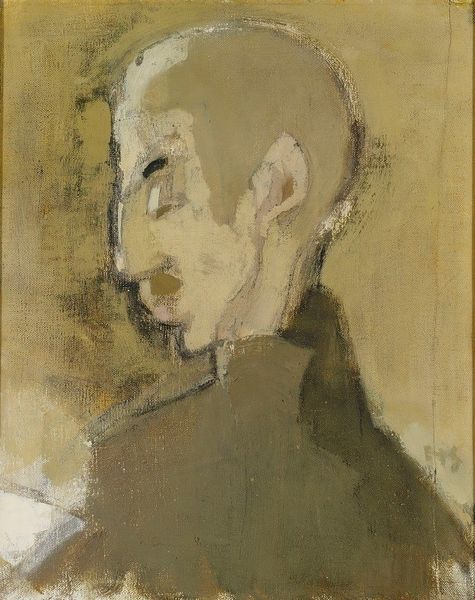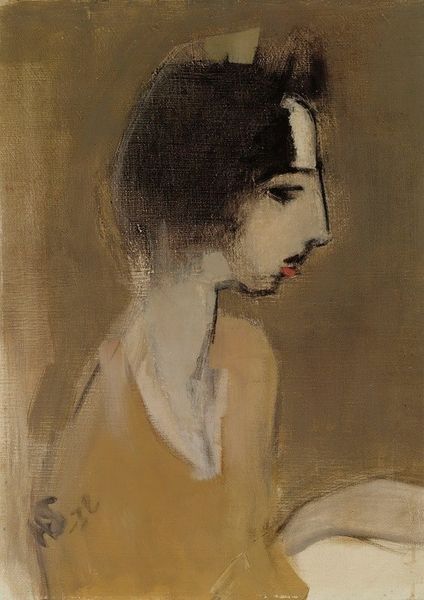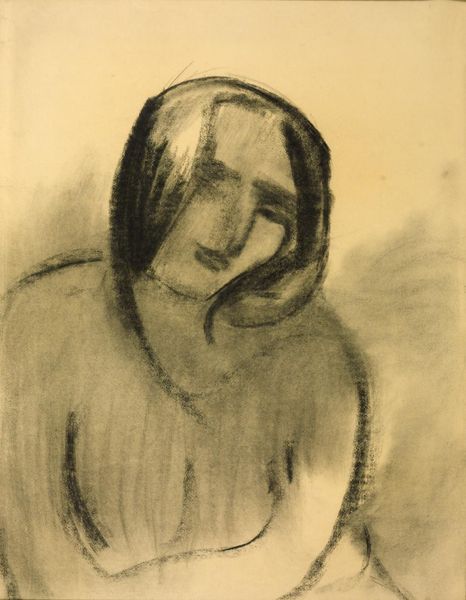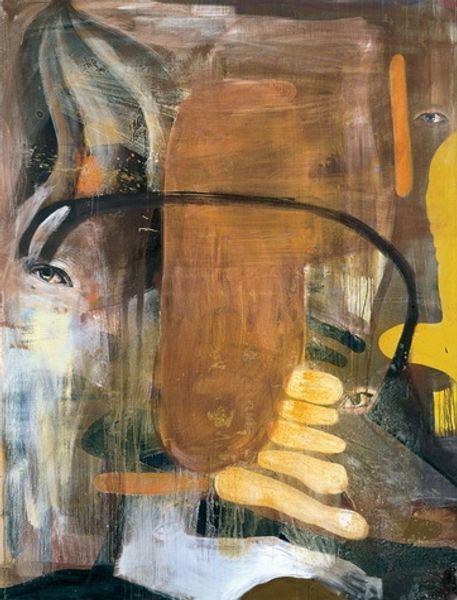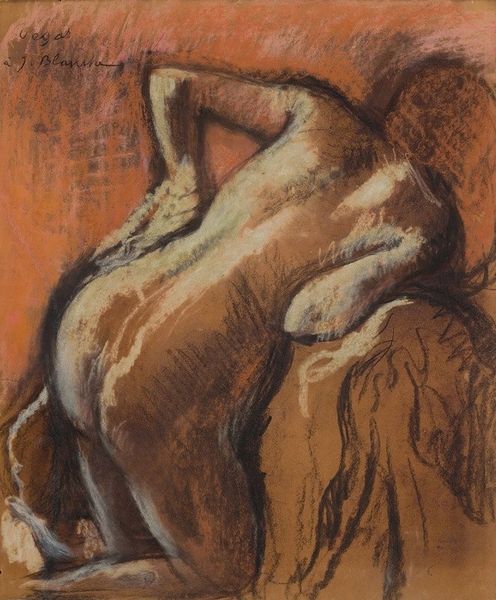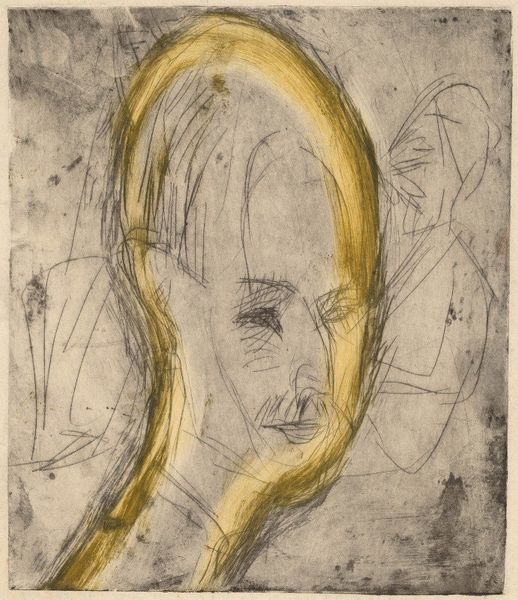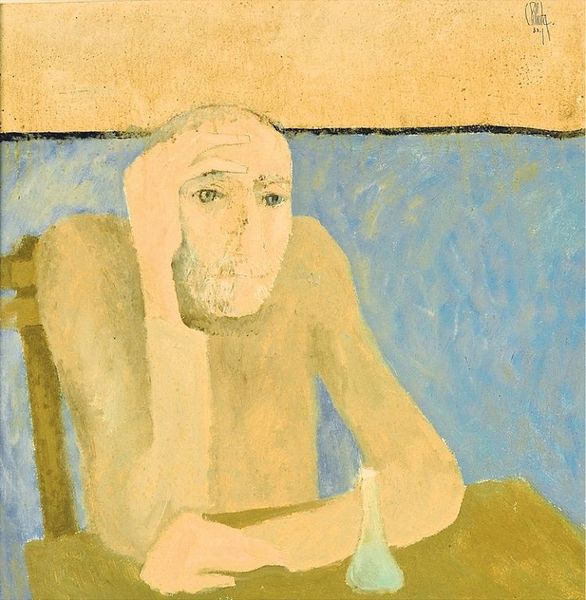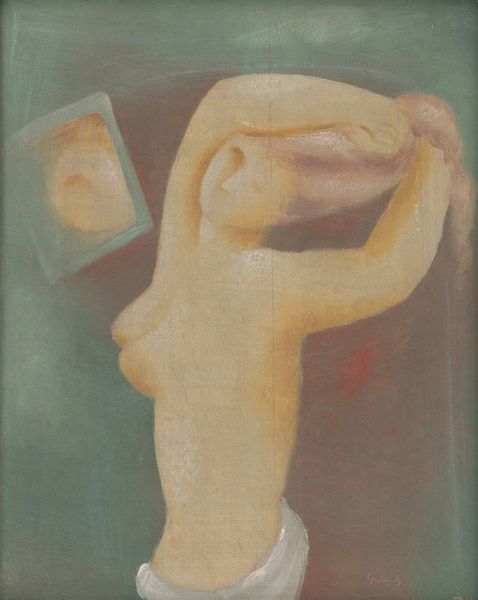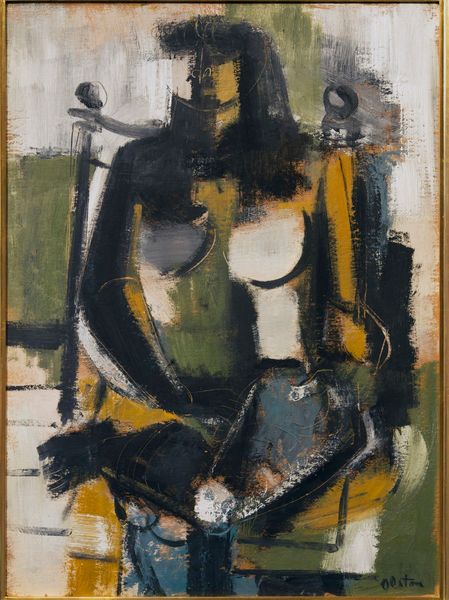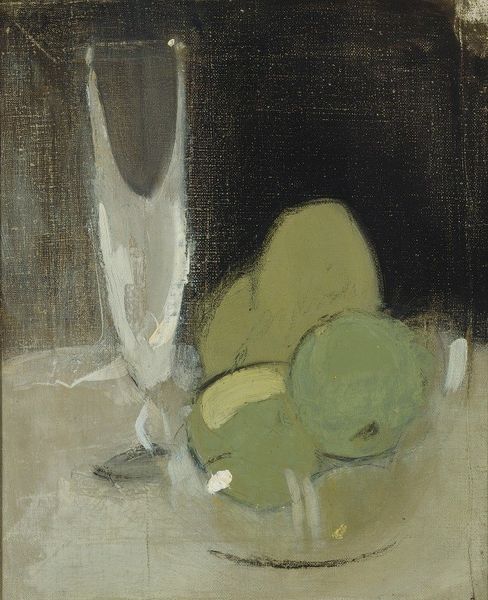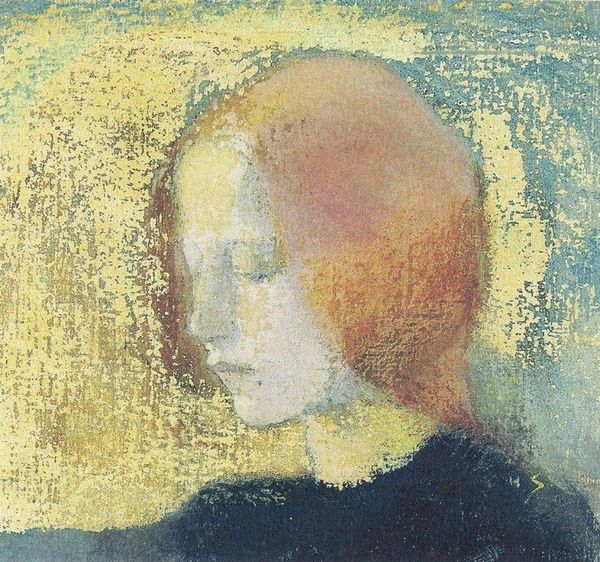
painting, oil-paint
portrait
painting
oil-paint
figuration
form
oil painting
expressionism
modernism
Copyright: Public Domain: Artvee
Curator: Here, we see Helene Schjerfbeck's 1919 oil painting, "The Gipsy Woman." Editor: It’s somber. The figure almost disappears into the murky, muted tones, an interesting study of form despite the restrained palette. Curator: Schjerfbeck was a master of paring down forms to their absolute essence. The textured surface, the visible brushstrokes, these reveal her process. This piece was created during a period of significant social change and upheaval in Europe. Do you think that had any bearing? Editor: It’s certainly tempting to see the fragmentation of the figure as mirroring that upheaval. But more fundamentally, the limited color range and simplification of forms drive us to consider the bare essentials of shape and composition. Notice how the negative space around the figure creates as much definition as the brushstrokes themselves. Curator: Absolutely. It’s difficult not to think of the plight of Romani people in the context of early 20th century Europe when encountering this artwork. Schjerfbeck's rendering really strips back all the layers, leaving what almost appears to be the skull showing through - in the most painterly fashion. Editor: And yet, while it hints at hardship, the painting prioritizes formal exploration. The economy of line, the stark contrast between light and shadow – they give a structure which is almost geometric, bringing a modern quality into a recognizable style of portraiture. Curator: We can also view the artwork through the lens of Schjerfbeck's own personal circumstances, can't we? She often struggled with isolation, economic hardship, and felt confined within a male-dominated art world. Editor: Undeniably those details help create layers of context but without the artist having command of their artistic material none of this narrative really matters, does it? Look at how the subtle layering of the translucent colours evokes emotionality that all combine so well. Curator: These biographical facts undeniably inform how a contemporary viewer encounters the work today though. Thank you, it’s a fascinating to consider what "The Gipsy Woman" may have communicated about society, material realities, and Schjerfbeck's position within them all. Editor: Yes, seeing the starkness of forms can offer insight when studying her practice and its aesthetic strategies within expressionism.
Comments
No comments
Be the first to comment and join the conversation on the ultimate creative platform.
